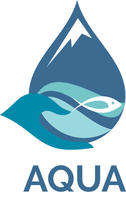Studying behavior and physiological stress in fish: a case study on the effect of artificial light at night on mobility and cortisol excretion and accumulation of thinlip mullet (Chelon ramada)
Résumé
Urban ecosystems are submitted to multiple anthropogenic stresses, which impact aquatic communities. Among those urban stressors, artificial light at night (ALAN) affects the aquatic biota. The wavelengths penetrating below the surface and the residual light intensity after diffraction and reflection on it vary according to the physical and biological characteristics of the water (salinity, density, suspended matter, including biological particles, e.g., plankton). All the characteristics of light play a role in the biology and physiology of all the species studied, including fish. The scientific literature highlights species-specific differences in the effects of ALAN on fishes. Furthermore, while the literature on the impact of nighttime illumination on urban biodiversity is growing, studies on fish behavior remain rare. In this work, we used thinlip mullet (Chelon ramada, Mugilidae), a common species widely distributed in European urbanized aquatic environments, as a biological model. Thinlip mullet is a rare representative of the herbivore/detritivore trophic guild in the ichthyological fauna, and as such, plays an essential role as a vector of energy between the benthic and pelagic compartments of aquatic food webs. An experiment was set up to understand the effects of ALAN on the behavior and physiological stress of thinlip mullet under controlled conditions. A total of 15 fish were exposed to different light modalities to mimic natural or altered photoperiods in an urban context during four successive trials of 72 hours each. The "control" aquaria received daytime light exposure, followed by no exposure during the night hours, and with gradual day/night transitions to mimic a "natural" photoperiod. The "exposed" aquaria received a continuous light during both day and night and with either direct or indirect modalities, to mimic an “altered” urban photoperiod. Fish behavior was analyzed with video imaging (Ethovision; variables including distance between subjects, movement velocity, distance traveled). In parallel, physiological impacts were assessed by measuring cortisol concentrations in the water and in fish blood at successive time steps. Results are currently being analyzed, but preliminary findings suggest significant differences in swimming and schooling behaviors of fish between the control and exposed conditions, while cortisol response (in the water and in fish blood) appears similar in all conditions.
Domaines
Ecotoxicologie| Origine | Fichiers produits par l'(les) auteur(s) |
|---|


